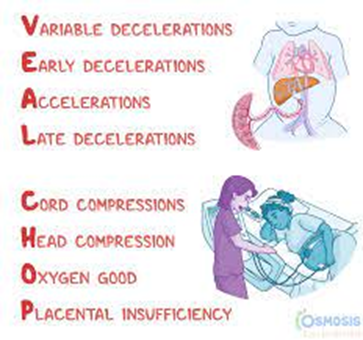A nurse is caring for a client who becomes unresponsive upon delivery of the placenta. Which of the following actions should the nurse take first?
Determine respiratory function.
Increase the TV fluid rate.
Access emergency medications from cart
Collect a maternal blood sample for coagulopathy studies
The Correct Answer is A
The correct answer is A.
A. Determine respiratory function: The priority is to assess the client's airway, breathing, and circulation (ABCs). If the client becomes unresponsive, the nurse should quickly assess whether the airway is clear, check for breathing, and determine if there is a pulse. This initial assessment is crucial for identifying and addressing any immediate life-threatening issues.
B. Increase the TV fluid rate: While fluid administration may be necessary in certain situations, it is not the first priority when a client becomes unresponsive. Assessing respiratory function and circulation takes precedence to address immediate life-threatening concerns.
C. Access emergency medications from the cart: Accessing emergency medications may be necessary, but it should occur after the initial assessment of the client's airway, breathing, and circulation. Administering medications without first assessing the client's ABCs may delay appropriate interventions.
D. Collect a maternal blood sample for coagulopathy studies: This action is important for assessing coagulation status, but it is not the first priority when a client becomes unresponsive. The immediate focus should be on ensuring the client has a patent airway, is breathing, and has a pulse.
Nursing Test Bank
Naxlex Comprehensive Predictor Exams
Related Questions
Correct Answer is B
Explanation
The correct answer is B. Uteroplacental insufficiency.
A. Umbilical cord compression is more commonly associated with variable decelerations, not late decelerations. Variable decelerations are characterized by abrupt decreases and increases in the fetal heart rate.
B. Late decelerations are indicative of uteroplacental insufficiency.
Uteroplacental insufficiency refers to a decrease in blood flow and oxygen supply from the mother to the fetus. Late decelerations occur after the peak of the contraction and may suggest inadequate oxygenation to the fetus.

C. Fetal head compression is associated with early decelerations, not late decelerations. Early decelerations typically coincide with the contractions and are considered a normal response to head compression during contractions.
D. Maternal bradycardia is not typically associated with late decelerations. Late decelerations are primarily related to issues with oxygenation and blood flow to the fetus.
Correct Answer is B
Explanation
Choice A Reason:
Oxygen Saturation: While oxygen saturation is important, it is not the highest priority assessment related to amniotomy. Monitoring oxygen levels is crucial during labor, but other factors take precedence
Choice B Reason:
Temperature:Correct. The nurse should prioritize monitoring the client’s temperature following an amniotomy. If the patient’s temperature is38°C (100.4°F) or higher, the nurse needs to notify the primary care physician promptly. Elevated temperature can indicate infection, which is a significant concern after the rupture of membranes.The nurse should also assess for other signs of infection, such as chills, uterine tenderness on palpation, foul-smelling vaginal drainage, and fetal tachycardia.
Choice C Reason:
Blood pressure is incorrect. Blood pressure is an essential parameter to monitor during labor, but it may not be the immediate priority when planning an amniotomy. Oxygen saturation takes precedence as it provides more direct information about the oxygenation status of both the mother and the fetus.
Choice D Reason:
Urinary output is incorrect. Urinary output is a vital sign to monitor, but it may not be the immediate priority when preparing for an amniotomy. O2 saturation is more directly relevant to the potential effects on the fetus during this intervention.
Whether you are a student looking to ace your exams or a practicing nurse seeking to enhance your expertise , our nursing education contents will empower you with the confidence and competence to make a difference in the lives of patients and become a respected leader in the healthcare field.
Visit Naxlex, invest in your future and unlock endless possibilities with our unparalleled nursing education contents today
Report Wrong Answer on the Current Question
Do you disagree with the answer? If yes, what is your expected answer? Explain.
Kindly be descriptive with the issue you are facing.
